Hot lazy days by the river. Seeking the cool shade of our ponderosa pine forests. Bright pops of wildflower color everywhere you go. Summer has arrived, and with it comes a new wave of wildflowers blooming. After fantastic spring weather for plants, this summer is sure to be a showstopper of blooms. Brush up on your summer wildflowers in Central Oregon and see if you can find all six of these beauties! Then, feel free to plant some of these native plants in your yard or garden, as they're also beneficial for native pollinators!
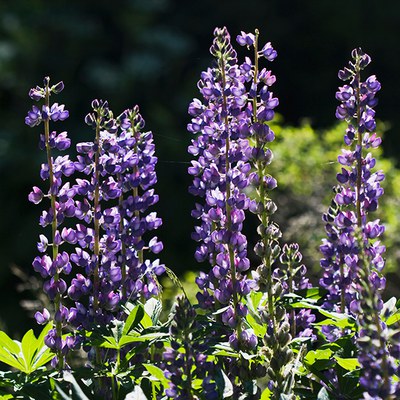
Other common names: Bigleaf lupine
Lupines are quite common in the US, with nearly 600 varieties. The large-leaved lupine has bright green basal leaves with 5-11 leaflets that are 2-3" long. Flowers are blue, lavender, pink, or white with a white patch that often turns reddish with age. This lupine’s name comes from its many leaflets: poly means “many” and phyllus means “leaf.”
Bloom time: Late spring - early summer
Spot them at this Land Trust Preserve: You can spot large-leaved lupine at lots of Land Trust Preserves, including Camp Polk Meadow Preserve, Indian Ford Meadow Preserve, the Metolius Preserve, and Whychus Canyon Preserve, as well as during guided Walk + Hikes at Willow Springs Preserve.
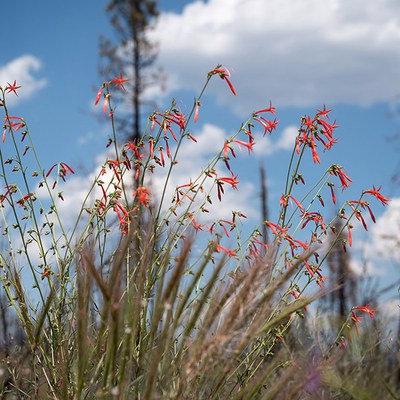
Other common names: Skyrocket
Trumpet-shaped, bright red flowers on stems up to 3’ tall. Flower color may vary from scarlet speckled with white, to pale pink speckled with red. Grows in dry soil in woodland openings and meadows.
Bloom time: Midsummer
Spot them at this Land Trust Preserve: Look for scarlet gilia at the Metolius Preserve, Whychus Canyon Preserve, and on guided Walks + Hikes at the Metolius River Preserve.
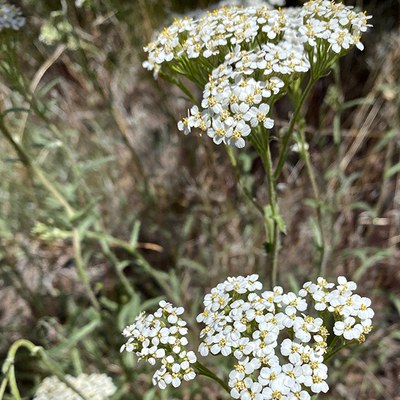
Other common names: N/A
Flat-topped cluster of many flower heads, usually 5 rays each. Flowers can be same color or contrasting white, pink, and purple. Leaves are fernlike with a stem that is 1-2’ tall.
Bloom time: All summer
Spot them at this Land Trust Preserve: You can find common yarrow at most Land Trust Preserves! See it at Camp Polk Meadow Preserve, Indian Ford Meadow Preserve, Metolius Preserve, Whychus Canyon Preserve, and on guided outings at the Metolius River Preserve, Paulina Creek Preserve, and Willow Springs Preserve.
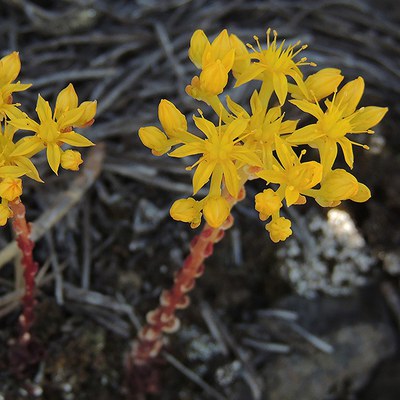
Other common names: Spearleaf stonecrop
Part of the sedum family, which has around 1,500 species. Lanceleaf stonecrop is all things spear-shaped! Rosettes of succulent leaves that are lance-shaped have a 1-8 inch tall flowering stem. Leaves on stems are upward pointing and, you guessed it, lance-shaped. They wither during flowering. Flowerheads are dense with 3-25 flowers. Flowers are yellow with five petals, and spear-shaped. Often, flowers have a red central rib. Lanceleaf stonecrop grows in dry, rocky soils.
Bloom time: All summer
Spot them at this Land Trust Preserve: Look for lanceleaf stonecrop at Whychus Canyon Preserve.
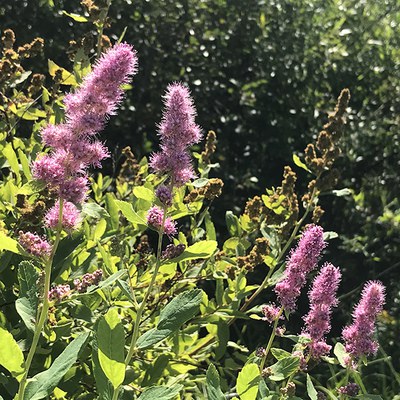
Other common names: Hardhack, Rose spiraea, Western spiraea
A thicket-forming shrub that grows 2-6 feet tall and has many branches. Douglas's spiraea has many, tiny pink flowers on pointed clusters. The prominent stamens give the flowers an appearance of being fuzzy. Dark green leaves are alternating and oval to oblong. Douglas's spiraea grows on moist streambanks, in meadows, and in forests.
Bloom time: All summer
Spot them at this Land Trust Preserve: You can spot Douglas's spiraea at Camp Polk Meadow Preserve, the Metolius Preserve, Whychus Canyon Preserve, and during Walks + Hikes at the Metolius River Preserve and Willow Springs Preserve.
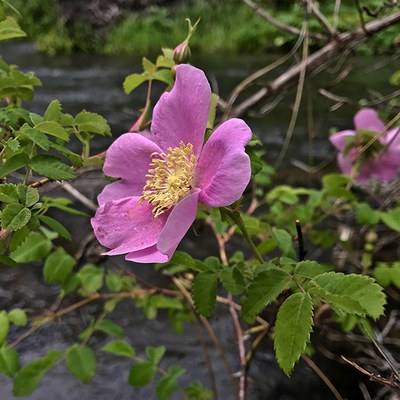
Other common names: Western wild rose, Pearhip rose, Interior rose
A beautiful shrub in Central Oregon! This native rose grows 3-6 feet tall along moist streambanks and meadows in otherwise dry forests. Woods' rose has thin, straight thorns and single-toothed leaves with 5-9 leaflets. Flowers have five petals that are 3/4 to 1 inch long. Woods' rose can have deep pink to barely tinged pink flowers. Birds love the fruits (rosehips), which are pear-shaped and 1/3 inch long. Woods' rose has a number of varieties that occur throughout the American West.
Bloom time: All summer
Spot them at this Land Trust Preserve: You can find Woods' rose at Whychus Canyon Preserve and on guided outings at the Metolius River Preserve, Priday Ranch, and Willow Springs Preserve.
Each summer brings a wealth of wildflowers, and this year is no different. Happy wildflower viewing!
**Although we make every effort to be accurate in our flower identification, it is often difficult to tell the differences between subspecies from a photo.**
Sources:
- Wildflowers of the Pacific Northwest by Mark Turner and Phyllis Gustafson
- California Native Plant Society
- Lady Bird Johnson Wildflower Center
Learn more:
- Would you like to see some of these beautiful blooms in your own garden? Check out your options with Pollinator Plants to Grow
- Another great wildflower guide exploring Wildflowers of the Ochocos


